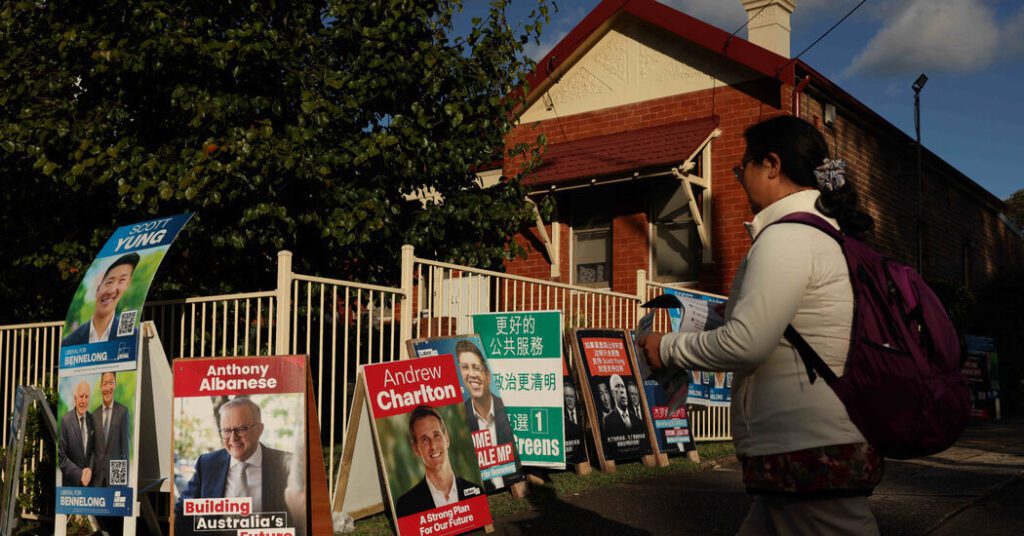Australia’s Upcoming Election: Key Issues and Candidates
As Australians prepare to cast their votes on Saturday, they find themselves navigating a complex political landscape shaped by global economic shifts and local issues. Australia, now the third major U.S. ally to hold elections following Germany and Canada, faces choices that resonate deeply within its societal fabric.
The Candidates and Their Challenges
Prime Minister Anthony Albanese of the center-left Labor Party and opposition leader Peter Dutton from the conservative coalition are the two main contenders in this election. They acknowledge the unique challenges Australia faces today, characterized by a heavy reliance on U.S. security and growing economic ties with China, amidst China’s military assertiveness in the region.
Economic Concerns in Focus
Economic issues dominate the electoral agenda, particularly a persistent cost-of-living crisis and increasing housing unaffordability. These pressing concerns have punctured the long-standing belief in Australia’s immunity to recession, which has been buoyed by its abundant resources and stable governance.
- Voters are most concerned with household financial issues rather than broader international matters.
- Polling indicates that Albanese’s Labor Party is poised for a second consecutive term, despite earlier forecasts favoring the opposition.
Candidates’ Campaign Strategies
Dutton, actively campaigning on economic relief, has highlighted his party’s proposal to cut fuel taxes during visits to gas stations. In contrast, Albanese frequently promotes Australia’s Medicare system, aiming to reduce healthcare costs for families.
In their final debate, both candidates were caught off-guard when asked about the price of a dozen eggs, which is now over 8 Australian dollars. Their miscalculations reflect a disconnect with the realities that many Australians are facing.
Social and Cultural Issues
Albanese’s term has been significantly impacted by the failure of a 2023 referendum aimed at securing representation rights for Aboriginal Australians in Parliament, a promise made during his electoral campaign. Dutton’s opposition to this measure underscores the broader cultural divisions, as he continues to reject various initiatives aimed at recognizing Indigenous Australians.
Moreover, Dutton has adopted rhetoric reminiscent of right-wing politicians abroad, including anti-“woke” sentiments. However, this alignment with global rightist movements might be alienating key voter demographics.
Shifting Political Landscape
Australia boasts a compulsory voting system, which compels all eligible citizens to participate in elections. This framework historically encourages centrist politics, as major parties aim to appeal to a broader electorate.
Recent trends indicate a move away from traditional party loyalty, with growing support for independent candidates and minor parties. According to political historian Chris Wallace, this shift signals a profound voter dissatisfaction with the current options available:
“The major parties are not listening to voter views desperate for deeper solutions to the deep problems of today, especially younger voters.”
Conclusion
As Australia approaches a potentially pivotal election, voters are grappling with pressing economic challenges and a changing political landscape. The decisions made in the coming days will have long-lasting implications for the nation’s trajectory, as Australians seek leaders who can effectively address their needs and concerns.


